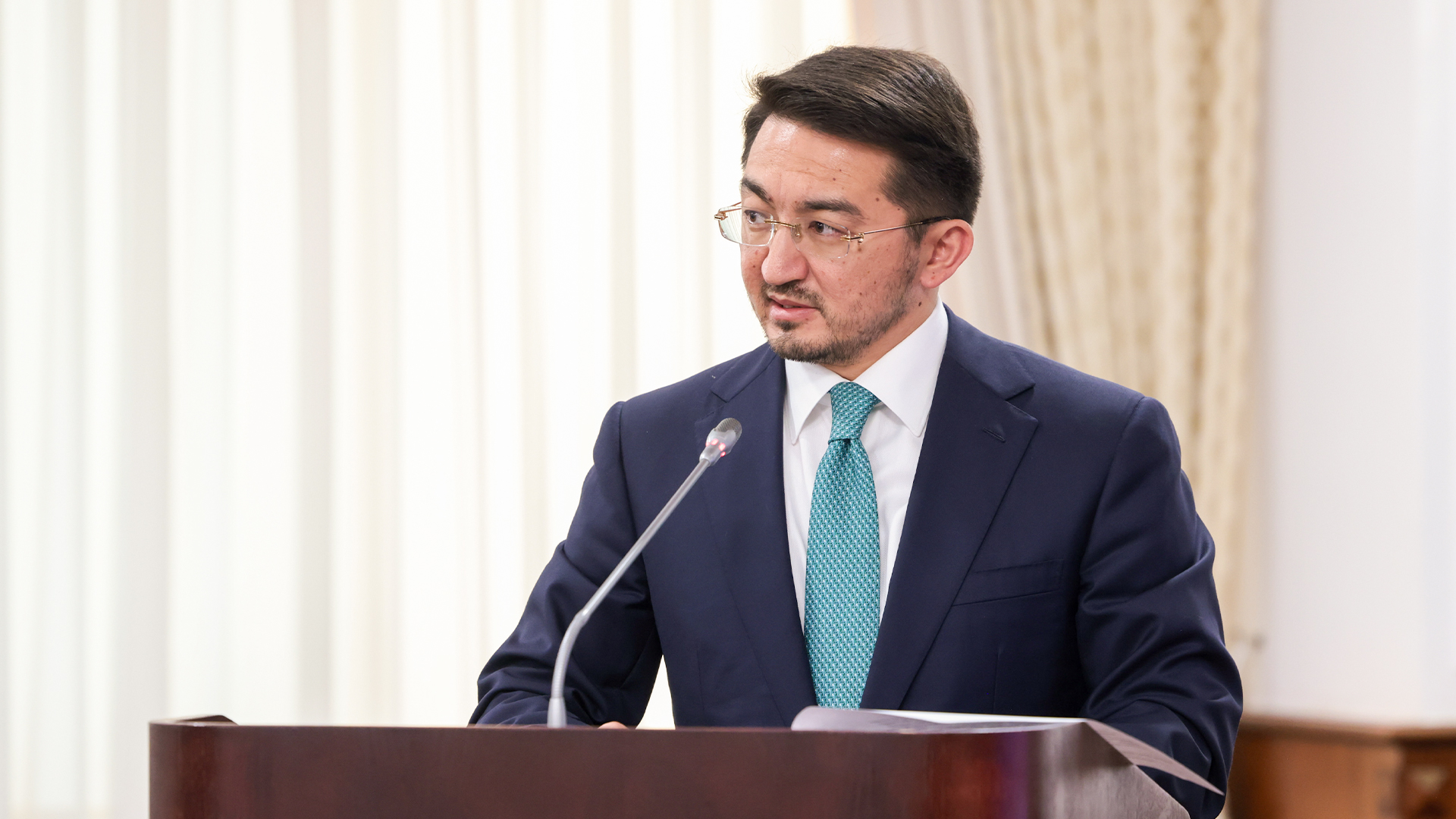
Minister of Digital Development, Innovation and Aerospace Industry Zhaslan Madiev spoke at the Government session about the work being done to improve the quality of communication in Kazakhstan, Phoenix 24 reports.
He noted that, according to international data, the proportion of the population using the Internet is at the level of developed countries. The growth of traffic in the republic in relation to 2020 increased by 61.5%, and the number of subscribers – by 12.9%.
At the same time, according to Speedtest Ookla data for April 2024, Kazakhstan ranks 66th with an average speed of 43.6 Mbps. This is higher than Russia, Kyrgyzstan and Uzbekistan.
Today, there are 6,290 villages in the country, of which 2,606 villages are wired with fibre optics. Under the National Project, it is envisaged to connect optical communication lines through PPP mechanism to 3,010 villages. Where there is no “last mile”, the mechanism of subsidising 50% of capital expenditures of small and medium-sized telecom operators will be used.
As a result, 2.4 million people are expected to be provided with Internet access. It is envisaged to attract private investment from telecom operators in the amount of more than 340 billion tenge.
Mobile Internet is now available in 4,866 villages. As part of tax incentives, 1,161 villages were connected to 4G technology in 2023. Work on the remaining 1,424 villages is ongoing. In order to incentivise mobile operators, the Ministry proposed to include in the new Tax Code the extension of tax incentives for radio frequency spectrum and changes in the fee rate.
Regarding further development of 5G technology, Kcell and Tele2 operators will continue to expand 5G coverage in the cities of Astana, Almaty, Shymkent and regional centres. To date, 1,144 base stations have been installed in 20 cities.
“According to the instruction of the Head of State, the introduction of 5G mobile communication should be completed by the end of 2025. In general, more than 450 billion tenge will be invested in the telecommunications industry by mobile operators by the end of 2027,” the minister said.
To improve the quality of communication, the Ministry proposes the following specific measures:
– general plans and detailed planning projects of settlements will provide for the infrastructure of communication networks;
– it is proposed to revise the regulations on the maximum permissible level of radio signal of base stations. In Kazakhstan, the standards are 10-20 times more stringent than in developed countries and even in neighbouring countries;
– The Ministry together with akimats and operators will continue to eliminate “white spots” with poor communication in cities;
– changes are being made to allow the installation of base stations on state institutions (where there is no room for the protection of state secrets);
– the launch of Voice over Wi-Fi (VoWiFi) technology, i.e. voice calls over Wi-Fi networks instead of traditional mobile networks, is being considered. This will provide better quality of communication in places with poor cellular coverage (car parks);
– A “Digital map of telecommunications” is being launched to monitor the improvement of communication quality across the country. Everyone will be able to see problems with the quality of communication in localities and plans for their elimination, as well as to give their own assessment of any location. The link is available on the Ministry’s website.
“Today we announce the technical launch of this Digital Map,” Zhaslan Madiev said.
According to him, to provide mobile internet to the republican motorways, the appropriate digital infrastructure is needed.
To date, akimats are developing design and estimate documentation for 243 AMS (republican roads). Construction of AMS is planned in 2025-2026.
To date:
– 13 AMSs have received positive conclusions of expertise;
– design and estimate documentation is being developed for 141 AMSs;
– Akimats plan to start tender procedures for the development of design and estimate documentation for 84 AMSs in the 3rd quarter of this year.
The Ministry has connected 1,485 schools out of 1,883 schools within the framework of the pilot project on the use of SpaceX technologies by NGSA.
1485 schools out of 1883 schools.
As part of the discussion and agreement with the National Security Committee, it is planned to extend the pilot project to the needs of the Ministry of Emergency Situations for internet access during emergency response.
To develop the Digital Silk Road and make Kazakhstan a regional digital hub, the National Project envisages the implementation of 3 activities.
The first is the laying of optics on the Caspian Sea bed with the length of 370 kilometres. Investments of telecom operators of Kazakhstan and Azerbaijan will amount to more than 23 billion tenge.
Today, a joint venture between Kazakhtelecom JSC and Azertelecom LLC has been established, and a tender to select a contractor for designing and laying the underwater FOCL is being finalised.
The second is the construction of the national hyper backbone West-East, which provides for the increase of transit traffic through the territory of Kazakhstan.
The third is the construction of a data centre at least Tier-III level to store transit and international traffic.
“On these two projects we received a proposal from Freedom telecom LLP. Own investments in the hyper backbone will amount to more than 17 billion tenge with the term until the end of 2025, and in the construction of the data centre – more than 90 billion tenge with the term of the project until the end of 2027,” the Minister stressed.
Thus, the implementation of the above projects will provide an alternative route for international data transit and attract BigTech companies (Google, Amazon, Microsoft) to the market.
In general, these 3 projects are financed by the operators with their own funds.
